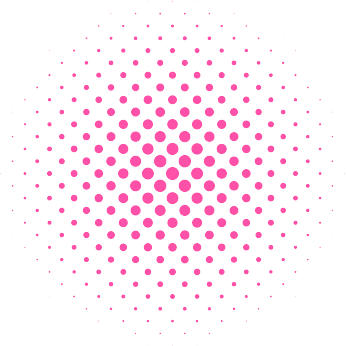CRYO-S ® Electric II is state-of-the-art cryosurgical device manufactured by METRUM CRYOFLEX is the next generation of apparatus used in the surgery field since 1992.
Specializations
Cryotherapy have been used to freeze living tissue for the purpose of treating benign and malignant lesions. Within the last century, ophthalmologists have found cryotherapy to be useful in treating a variety of ocular pathologies. Cryosurgery has been used to treat a variety of ophthalmic conditions, including surface and intraocular pathology. Cryosurgery may be preferable in treating certain surface and intraoculus diseases (including benign and malignant lesions), as there are few post-operative adverse events and limited long-term complications when compared to radiation and chemotherapy.
All of the probes are reusable, easy to sterilize and easy in exploitation. Cryoprobes are equiped with chip sensor containing data of the optimal working parameters (flow, pressure, temperature). Sensor accouts the number of applications which guarantee the highest level of safety.
Cryosurgery is a way of treatment that is used for various benign, premalignant and malignant skin lesions, either as a primary or as an alternative form of treatment. From clinical point of view the method is simple and safe. The broad spectrum of indications and relatively low cost of freezing makes this technique very popular in dermatological practice.
Cryosurgery technique is an established clinical modality which offers ENT surgeons a unique tool to eradicate many benign as well as pre–malignant lesions in the ENT spectrum. Its special role in chronic vasomotor rhinitis is well established.
Cryosurgery technique which is tissue destruction by local application of a refrigerant offers clear advantages over other invasive methods. Its inherent anesthetic and haemostatic properties make it suitable for outpatient use. The tissue destruction is essentially well circumscribed, leaving a cryolesion characterized by healing without scarring and complications.
Cryoablation with CRYO-S Electric II is successfully used as a supplementary treatment to bilateral tonsillectomy performed due to the chronic palatine tonsillitis. Moreover, cryosurgery was used effectively in treatment of chronic rhinitis, papillomas located in nose and larynx, leucoplakia and neoplastic lesions of the nasopharynx.
Many ENT-diseases may be not amenable to conservative treatment.In these cases, we are decided to apply cryosurgery.This applies particularly to the turbinate hypertrophy treatment.
Most effective 3 steps of treatment involving cryosurgery method:
Recomended steps for treatment using CRYO-S Electric II:
All of the probes are reusable, easy to sterilize and easy in exploitation.
Endometrial cryoablation is considered an innovative technique. We have few data on this technique, and, as of yet, there are published long term results of large, randomized, controlled trials. Based on the results of such randomized, controlled trial shows that endometrial cryoablation compares with transcervicalresection of the endometrium in terms of efficacy, the level of satisfaction and the reoperation rate. It was found that endometrial cryoablation is a very efficient method in women affected by uterine bleeding due to nonmalignant endometrial hyperplasia. Finally, the selection criteria for this procedure include non-obese women, having had menarche at 12 years old or later, having given birth no more than twice, and with endometrial thickness no more than 10 mm.
It is necessary to select the appropriate type of probe suitable to the shape and location of the lesion. Touch the affected place with probe, and activate the device pressing the footswitch. The probe adheres to the tissue lowering its temperature. During about 2 minutes, a margin of frozen tissue is created. It is advisable to achieve freezing depth of 3-4 millimeters. Upon releasing the footswitch the probe warms up within seconds .Properly carried out freezing is painless, and leaves no scars after healing. A procedure including two time freezing lasts about 15 minutes. After a few weeks of healing there are no signs of lesions.
Cryosurgery is a recognized treatment procedure using low temperatures to destroy lesions. CRYO-S units allow freezing of tissue on a measured area and depth.
Thanks to the special shapes of the cryoprobes, full scope of freezing within the area of vagina, fornix, cervix and cavum uteri is possible, as well as within the area of labia, anus and any part of the skin. In gynecology, cryosurgery is commonly used in treatment of: ectopia, polypean and papillomatous hyperplasia of the mucous membrane, metaplasia foci with negative onco-histological result.
Cryosurgical procedures are smokeless, in contrast to photocoagulation, electrocoagulation and laser vaporization. Extremely high temperatures produce smoke containing biological material, and unpleasant odour. It leads to contamination of the treatment field area. The smoke often contains virus genomes, e.g. HPV, which create danger of iatrogenous infection of airpassages of people staying nearby. Cryosurgery procedures do not cause contamination of the room with vaporised tissue and smoke, so there is no risk of HPV infection.
It lasts a few weeks. The place of freezing remains covered with dead epithelium, which plays the role of natural dressing, and then peels off. After reatment, patient experiences metrorrhea-effusion from among frozen epithelium cells. It is not necessary to use any tablets or globules. However, it is advisable to maintain high personal hygiene, and to take showers instead of baths in a tub. Sexual intercourse during the healing period is inadmissible. If a patient visits other doctors during the period following the treatment, she must inform them of the cryosurgery treatment, otherwise a misdiagnosis is possible.
The final result is fully satisfactory. The physiological regeneration of tissue does not leave scars. The sore place becomes healthy, fully elastic. For this reason cryosurgery is permitted in nulligravidas cases. Photo documentation of the changed place before and after cryosurgery is advisable as a very good result may give rise to suspicions that there was no pre-existing illness.
Developed and patented in METRUM CRYOFLEX liquifiers system dedicated for gyneacology can be used with uniqe spry type cryoapplicator SG10. It is resusable spray type cryprobe with single use cotton stick and resusable freezing limiters.
SG-10 pen type cryosurgical probes with fluent, adjustable freezing power
Because of that one SG 10 spray type cryoprobe can replace all contact type cryoprobes except the needle type. Spray type cryoprobe can be used more efficiently in comparision to traditional contact probe (even liquid nitrogen probes) because of:

As a SAAS web crawler expert, I help organizations to the expanding significance of internet promoting.
You will only need to own the probes dedicate for desired specialization.
















Get all new updates about our products and more.
Loading......